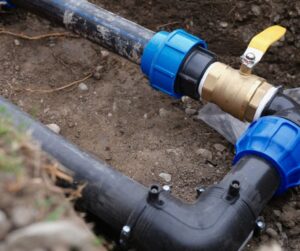If you live in the Southeast of the country, you know all too well that hurricane season can damage many parts of your home. But did you know that damage can include damage to your plumbing system? Indeed, it can and does.
With the high winds, heavy rain, and flooding that hurricanes bring, it’s essential to inspect and maintain your plumbing system afterward to fix issues and avoid long-term damage.
In this blog by Complete Plumbing and Drain, we’ll go over the most essential tips for maintaining your plumbing post-hurricane season and why taking these steps can protect your home from future issues.
Steps for Maintaining Your Plumbing After Hurricane Season
After the storm has passed, it’s critical to inspect and maintain your plumbing. After all, not every plumbing problem is easily spotted and you sure don’t want issues to creep up.
1. Inspecting Your Plumbing for Visible Damage
One of the first things you should do is conduct a thorough visual inspection of your plumbing system. Look for any signs of damage caused by debris, wind, or flooding.
Common areas to inspect include:
- Outdoor faucets and connections
- Exposed pipes near your home’s foundation
- Drainage systems around your property
- Check for cracks, leaks, or any signs of wear that may have been made even worse by the storm.
Taking early action can prevent more significant problems down the line.
2. Checking for Hidden Leaks and Water Damage
While visible damage is easy to spot, hidden leaks can cause serious problems if left unattended.
In addition, it’s a good idea to monitor your water usage and water bill closely. If you notice an unexpected spike, it could be a sign of an undetected leak.
Here’s what you can do:
- Monitor water pressure in your faucets and showers. Low water pressure may indicate leaks or blockages in the pipes.
- Inspect for signs of water damage in walls, ceilings, and floors, which could result from a plumbing leak or burst pipe.
- Consider scheduling a plumbing camera inspection to catch any hidden issues.
3. Testing Your Sewer and Drain Systems
Flooding from hurricanes can overwhelm your sewer lines and drain systems, causing clogs, backups, or even water supply contamination.
- Clear debris from storm drains and gutters.
- Test the drainage in your sinks, showers, and toilets to ensure there are no blockages.
- Schedule a drain cleaning if water is draining slowly or not at all.
4. Protecting Your Home from Future Flooding
After a hurricane, it’s not just about fixing what’s broken—it’s also about protecting your home for the future.
- Install a sump pump or ensure your current one is working correctly to prevent flooding in your basement or crawl space.
- Consider adding a backwater valve to your plumbing system to prevent sewage backups.
- Have a plumber check the integrity of your pipes to ensure they can withstand future hurricane season floods.
5. The Importance of a Professional Plumbing Inspection
Finally, scheduling a professional plumbing inspection is one of the best ways to ensure that your home’s plumbing system is in good condition after hurricane season.
- Check for leaks, clogs, and pipe damage you might have missed.
- Perform routine maintenance on critical components like your water heater and outdoor faucets.
- Offer expert advice on any plumbing repairs or upgrades your system might need to prevent future issues.

Ensuring Long-Term Health for Your Plumbing System After the Storm
Now you know, maintaining your plumbing system after hurricane season is crucial for protecting your home and avoiding dreaded expensive repairs.
If you’re in the Tampa Bay area and need a plumbing professional to inspect your home after the storm, Complete Plumbing and Drain is here to help.
Call today to schedule an inspection and ensure your plumbing is in top shape for the next hurricane season.